Everybody needs good neighbours, as the Australian soap opera's theme song begins. With a little understanding, as the next line goes, you can find the perfect blend. And that's just what Michael Lamb and his family found when they bought Rosalinde Lavelle's side garden and built their dream home on it.
Lamb, of Ryan & Lamb Architects, was living with his family in Monkstown Farm, in south Co Dublin, in 2016 when they started looking at trying to trade up. But as a family of four, with two active daughters who had to be driven everywhere, they thought they'd get better value by building a new home rather than buying another doer-upper.
So he consulted Google Earth, the tech company's mapping app, to try to find a site. It's a technique used by many developers, who also sometimes use drones to spot pockets of land that might not be visible from the road. Lamb became a keyboard warrior, using the tool to trawl the areas he and his wife grew up in for possible plots, drawing a radius around Monkstown, Glenageary, Dún Laoghaire and Killiney, all expensive areas.
During the boom Rosalinde Lavelle had countless offers from developers to buy her side garden, with promises of everything thing from fantastic sums of money to a fancy kitchen extension
He worked his way up and down older estates, residential developments built in the 1950s, 1960s and 1970s, on generous plots, looking at houses with sizeable side gardens. Examples include Arnold Park in Glenageary and, in Killiney, Avondale Road and Ballinclea Heights.
He says the trick is to switch from Google Earth's map view to its satellite view, so you get to see photographs rather than diagrams, and to zoom in and pan up and down a road. Once he identified a potential plot he and his wife, Katie, would hop in the car to see it in real life, and to check if the location of a bus stop or ESB substation, for example, might be an issue, or if access to the site is tighter than it appears on the map. These issues would all add to the build cost. They also dimissed properties with pristine gardens, figuring their owners would be reluctant to sell.
After he identified 10 potential sites, the couple hand-delivered letters to three of the owners, explaining that they were not developers, or interested in developing the site for profit, but that they were a family looking for a home, that they were both from the area and that their daughters were already at school nearby. Lamb also explained that he was an architect and that every step of the design would be discussed with the homeowner.
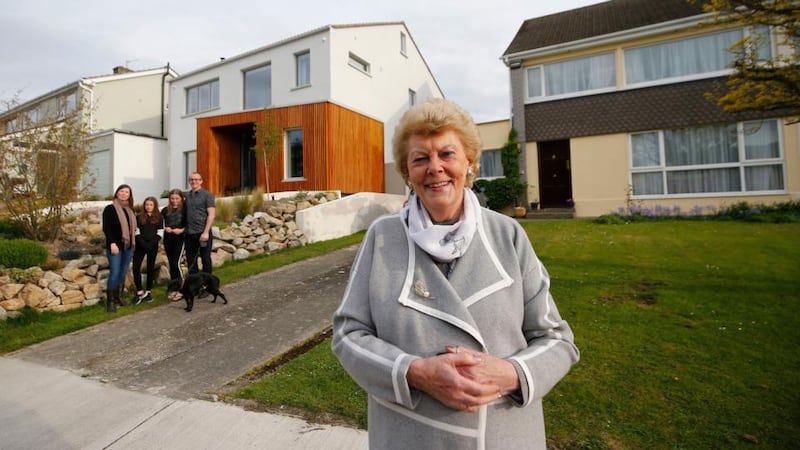
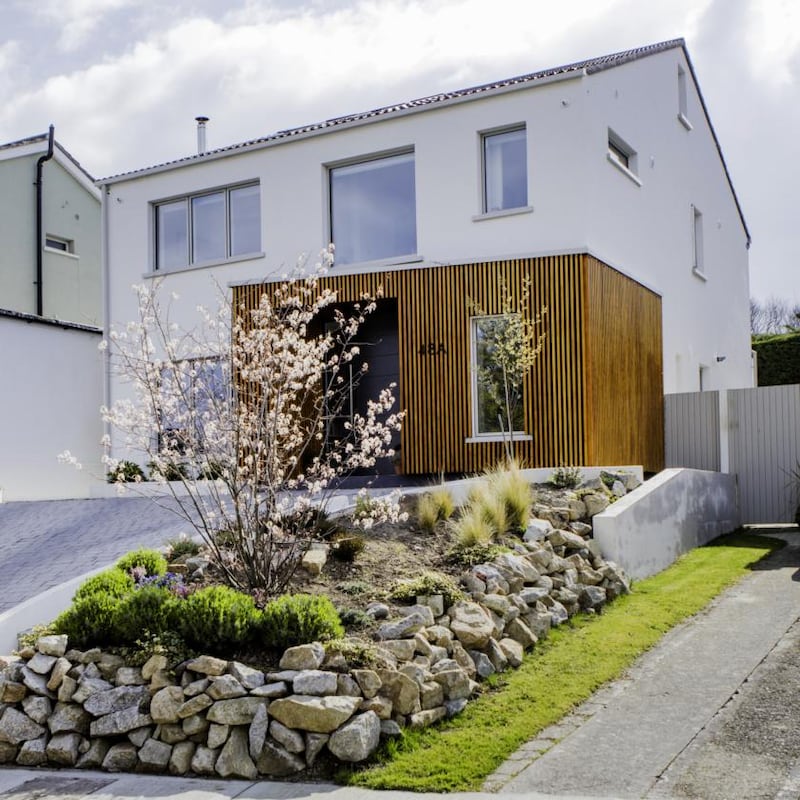
The key character in this story is Rosalinde Lavelle, a bridge-playing widow and grandmother of five, who called them the following day. "I got your letter", she said. "Come up and we'll have a chat."
During the boom she had countless offers from developers to buy her side garden, which stretched to 380sq m (4,090 sq ft) and faced south at the rear. All were men who knocked on her door promising everything thing from “fantastic sums of money to a big fancy kitchen extension”, she says. So when she got “this nice note” she phoned Lamb “to size him up”.
“We had a cup of tea and spent about an hour talking about general things,” Lamb says. “We wanted to show her that we were normal people and that she would, in effect, be able to pick who her neighbour would be.”
It turned out that Lamb and one of Lavelle’s daughters had done the same morning milk run while at school.
We should have had a contract in place that stated that the purchase was subject to planning, but we were working on trust
When the teacups were drained, Lavelle asked them to make her an offer. Fortunately, the Lambs had discussed this beforehand, and had a number in mind, but at this point they still didn’t know what they’d get for their own house.
Lavelle asked an estate agent to value the property. The Lambs turned out to be offering €100,000 less. But timing was on the their side. Their Monkstown home went up for sale, asking €395,000, in March 2017. Two months later it sold for €540,000, or 37 per cent over the asking price.
“We had to stretch ourselves, but it was a once in a lifetime opportunity,” Lamb says about going ahead with their new home.
He was also lucky that there had been an earlier application for outline planning permission for the new site, so he drafted his plans in accordance with it, and even marked their new home out on the site, so his new neighbour would be able to see its physical outline. Along with 3D drawings, it gave her a sense of scale and proximity, he says.
They submitted their new planning application through Lavelle before they bought the site. “We should have had a contract in place that stated that the purchase was subject to planning, but we were working on trust,” Lamb says.
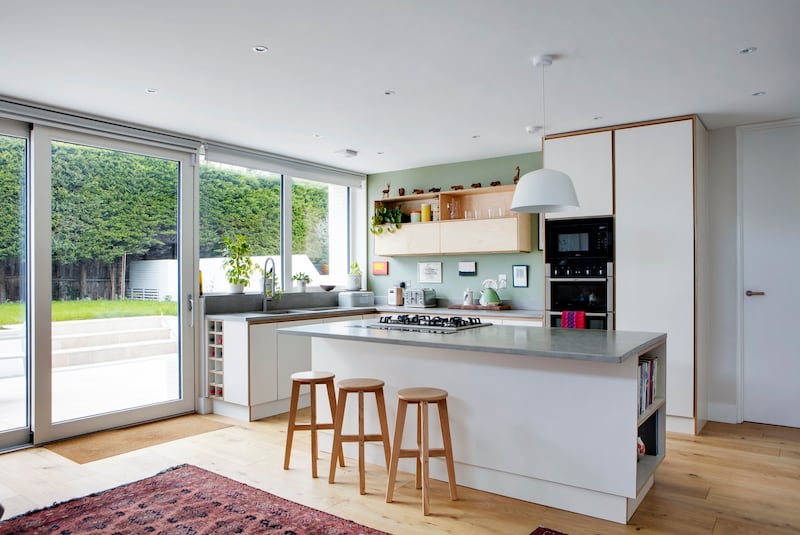
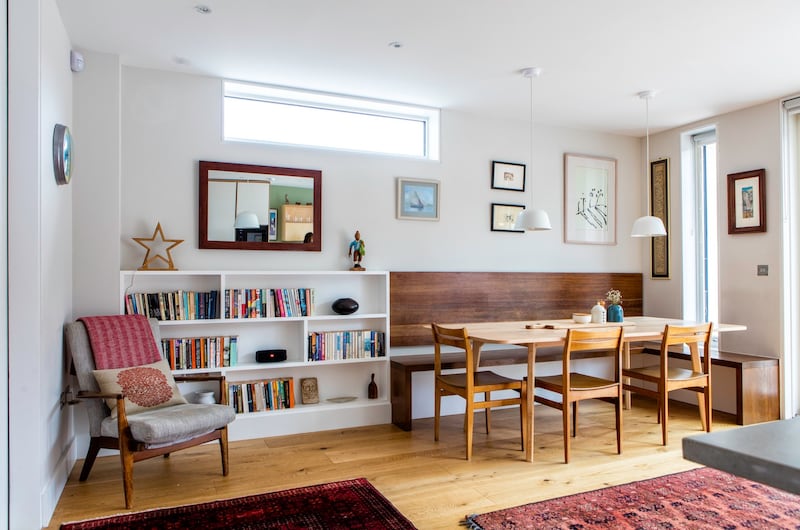
Before drafting his final plans he did some more research. The side garden was stepped between two semi-detached houses. Lamb reasoned that an underground stream or lump of granite may have stopped the original builders from constructing on it. It could also be some sort of historical feature.
So he overlaid historical maps on to up-to-date ones using Geohive, which includes geographical, natural environmental and historical mapping tools that date back to the 1800s, so you can see what different surveys have mapped. A ditch or field line was where you would typically find a stream, Lamb says. Luckily, the site was clear.
The build took about a year. The family moved in with Lamb’s parents, and during their time there his father became ill and died. It was very special to have been at home with him during the last few months of his life, Lamb says.
Their new three-storey home, 210 sq m (2,260 sq ft) in size, and staggered between their neighbours’ houses, is laid out to include a bootroom inside the door, where the girls can throw hurleys, boots, bags, helmets and coats. A utility separate from the kitchen means the washing machine and dryer can run without disturbing the cook’s music choices.
The house also has views across across Dublin Bay to Howth, something the couple didn't discover until building was under way and they climbed on to a digger to get a feel for what the views from the first floor would be.
There are three bedrooms on this floor; two identically sized rooms for each of the girls and the couple’s master bedroom, with those marvellous sea views.
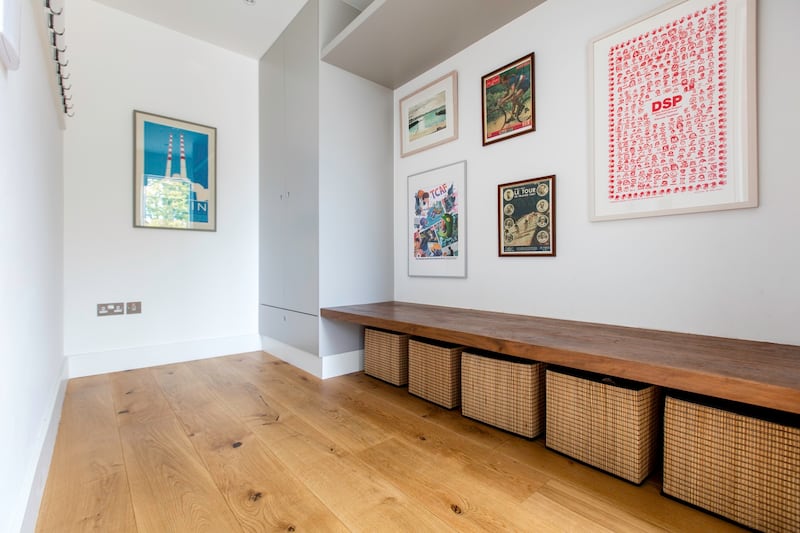
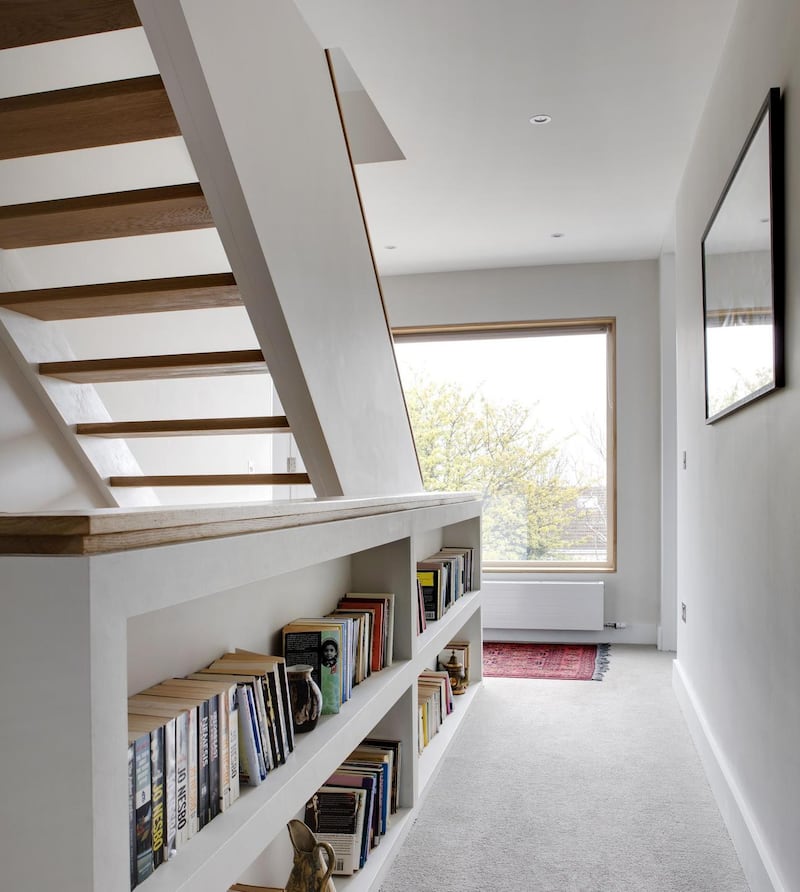
The girls had asked for a slide from their bedrooms into the garden. Instead they got custom wardrobes with lots of internal drawers and shoe space. There’s also a study.
The attic level has a large room that the girls use as a den when they have friends around for sleepovers. This is also where guests sleep. It was, Lamb reasoned, a far better use of space than hiving out a fourth and fifth bedroom for people who come to stay once a year.
There is underfloor heating at ground level and precast concrete floors on the levels above. “The girls can do gymnastics upstairs and you can’t hear it.”
A thermodynamic panel on the roof delivers free hot water, and a rainwater-harvesting tank under the front drive filters water for use in showers and toilets.
The home would cost about €500,000 to construct today, according to the contractor, AS Building Engineering, but the family did make savings thanks to Lamb’s involvement in the industry. He also saved on professional fees, of course, as he was the architect.
Lavelle concedes she could probably have sold the site for more than she did, but what swung it in the Lambs' favour was that they were going to live in the house themselves
To ensure all was in order, Lavelle had an engineer inspect her property during and after the building works, and although a few minor snags are being addressed, overall the build was without the drama you see on TV home-building shows.
Lamb got lucky again during construction. Lavelle let the builders use her drive to deliver bricks at the start of building work and then let them use her electricity rather than bringing in a generator. Lamb paid for all of the electricity they used.
Lavelle concedes she could probably have sold the site for more than she did, but what swung it in the Lambs’ favour was that they were going to live in the house themselves.
That the family already knew some of the children in the cul-de-sac was another boon. “It’s wonderful to see them on their bikes and in and out of each others’ houses,” says Lavelle, who is having her two grandsons, who live in Australia, to stay with her in June. “The grandkids will play with the girls and the other girls across the street.”












